As a Master Gardener, I Always Plant These 8 Unfussy Flowers That Thrive Almost Anywhere
Make life easier with expert Susan Albert's shortlist of low-maintenance annual and perennial flowers that give maximum reward with minimal consideration.

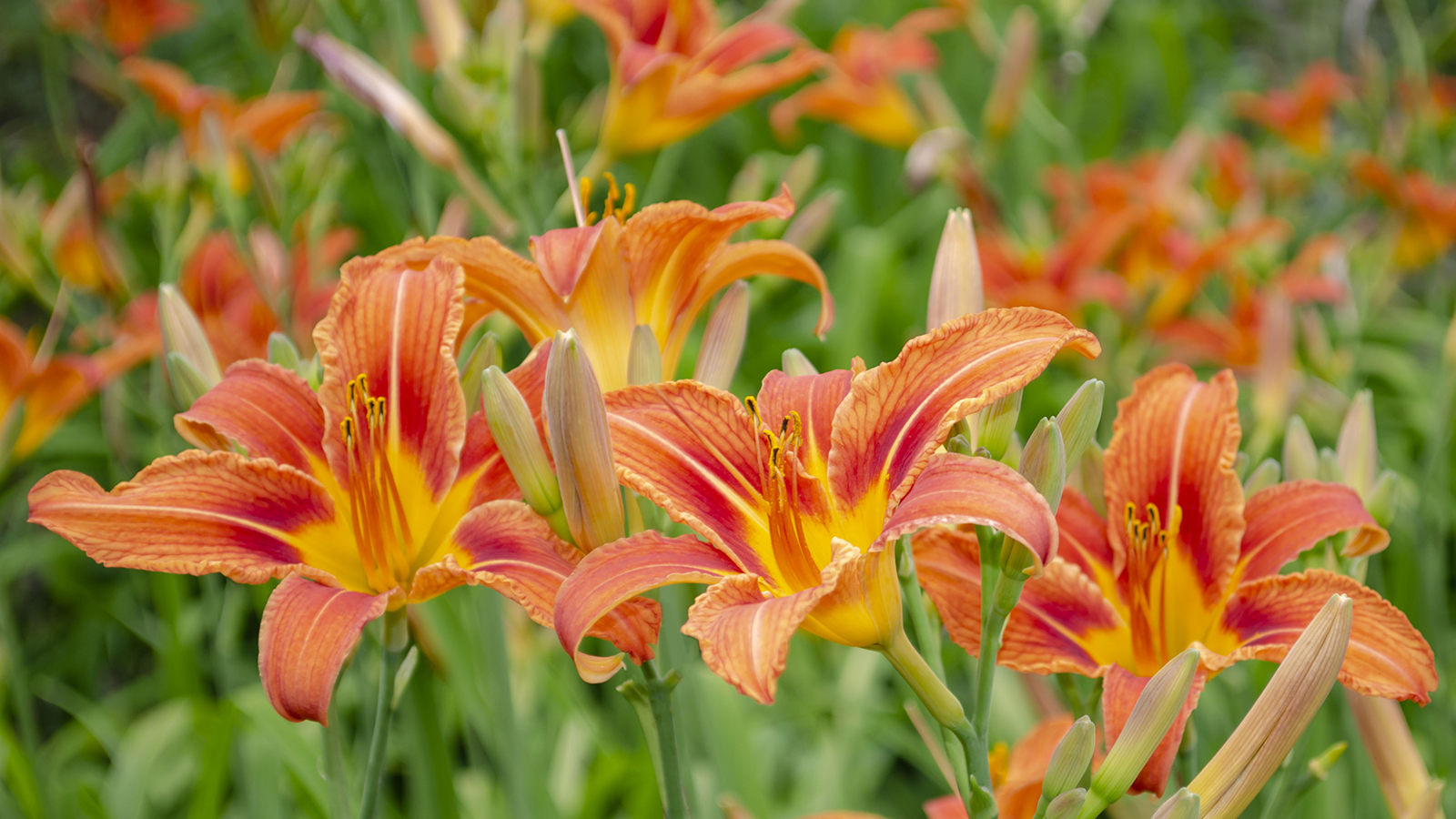
Gardeners are always looking for easy-going flowers that will make life a bit easier, while still providing a beautiful garden. In my years of experience as a master gardener and writer, I have cultivated the ultimate shortlist of unfussy flowers that require very little effort or maintenance.
Including both annual and perennial flowers in low-maintenance planting recipes will ensure that while the perennials are resting, you still have bountiful blooms all summer from the annuals. Annual flowers grow, bloom, and go to seed all in one season and won’t return the next year. Herbaceous perennial plants, on the other hand, grow and bloom for a length of time, then in winter, die back to the ground. In spring, they wake up and grow again. Perennial evergreen plants keep their leaves during winter.
Growing unfussy plants is an easy option if you don’t have a lot of time to devote to deadheading or cutting back stems, or are a beginner gardener. Here are my top unfussy flowers.
Unfussiest Annuals
These annuals do not need deadheading (removing spent flowers) so they are super easy.
1. Annual Vinca
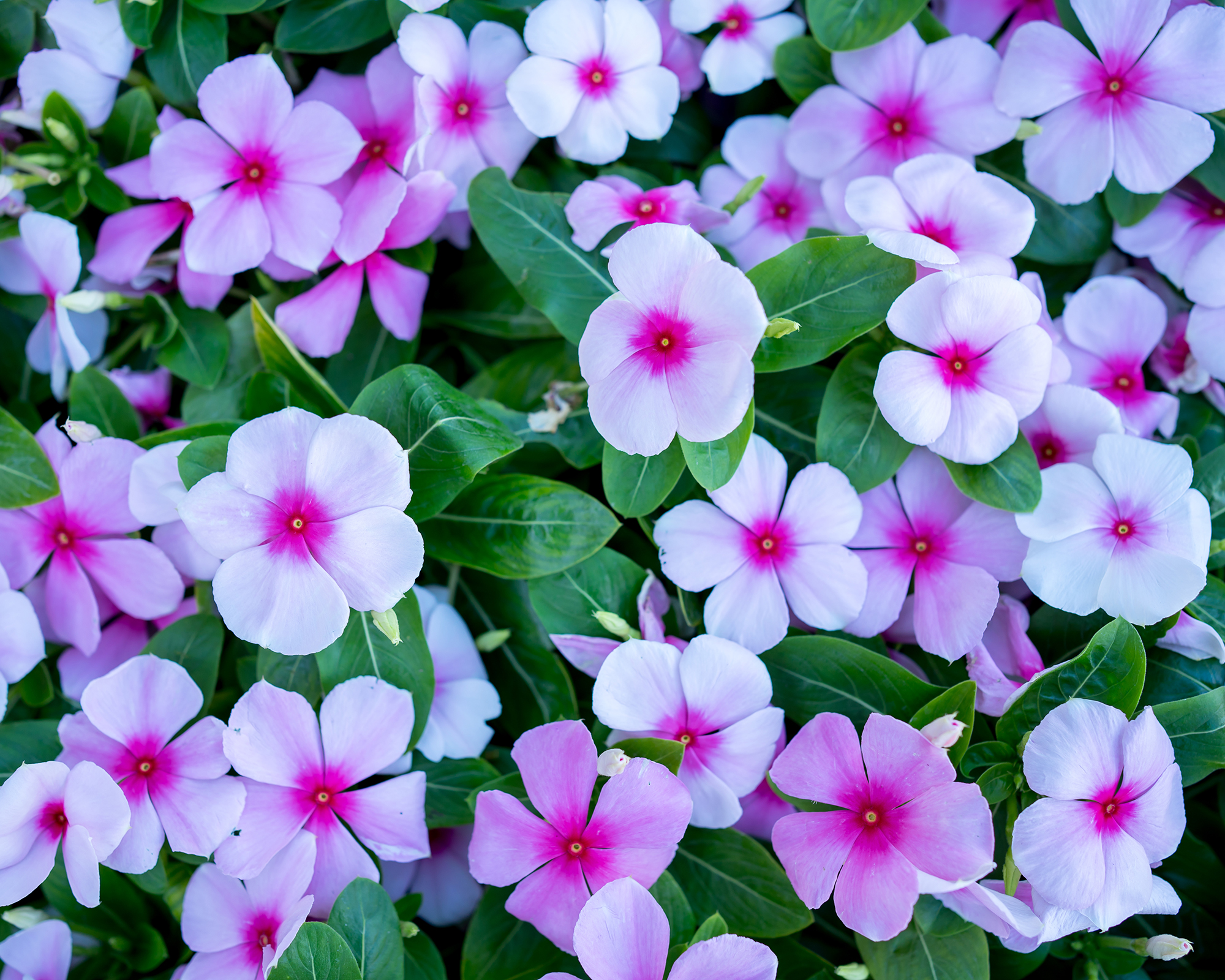
Annual vinca (Catharanthus roseus), also known as Madagascar periwinkle, is a compact, sun-loving, heat-tolerant bedding and container plant with phlox-like flowers that bloom all summer in colors such as pale pink, red, rose, hot pink, and white, usually with a contrasting center.
These self-cleaning plants don't require deadheading, but they do need watering. Plant in full sun to part shade in moist, well-draining soil. It is a tender perennial in USDA zones 10 to 11, and everywhere else it is grown as an annual.
Try a vinca hanging basket, such as this ready-planted one from Walmart, for easy vertical interest.
Sign up for the Gardening Know How newsletter today and receive a free copy of our e-book "How to Grow Delicious Tomatoes".
2. Wax Begonias
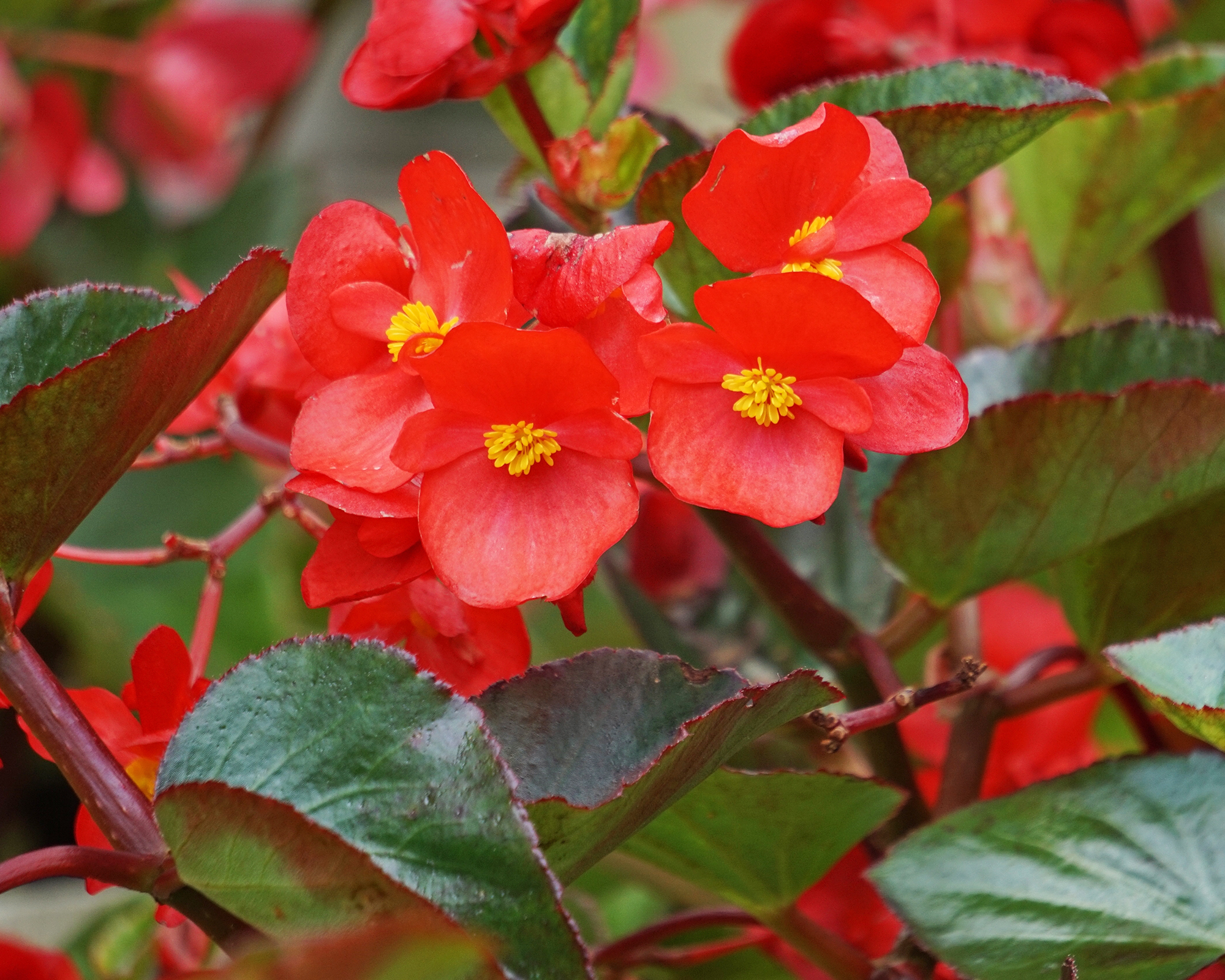
Wax begonias (Begonia semperflorens-cultorum) must be the easiest flowers to grow because they are not picky about sun and do not need deadheading or cutting back to remain floriferous and beautiful. The stems are a bit fleshy, so do not overwater (another plus!). Loose clusters of flowers in white, red, or pink adorn leaf axils.
The ‘Whopper’ series only takes one plant to fill a container by the end of summer. Grow them in sun or shade in well-draining soil. They are perennial in USDA zones 9 to 11, but typically grown as annuals.
Pick up plug plants from the garden center or start them from seed in the spring. These wax begonia seeds from Amazon provide a lovely soft color mix.
3. ‘Supertunia Vista’ and ‘Wave’ petunias
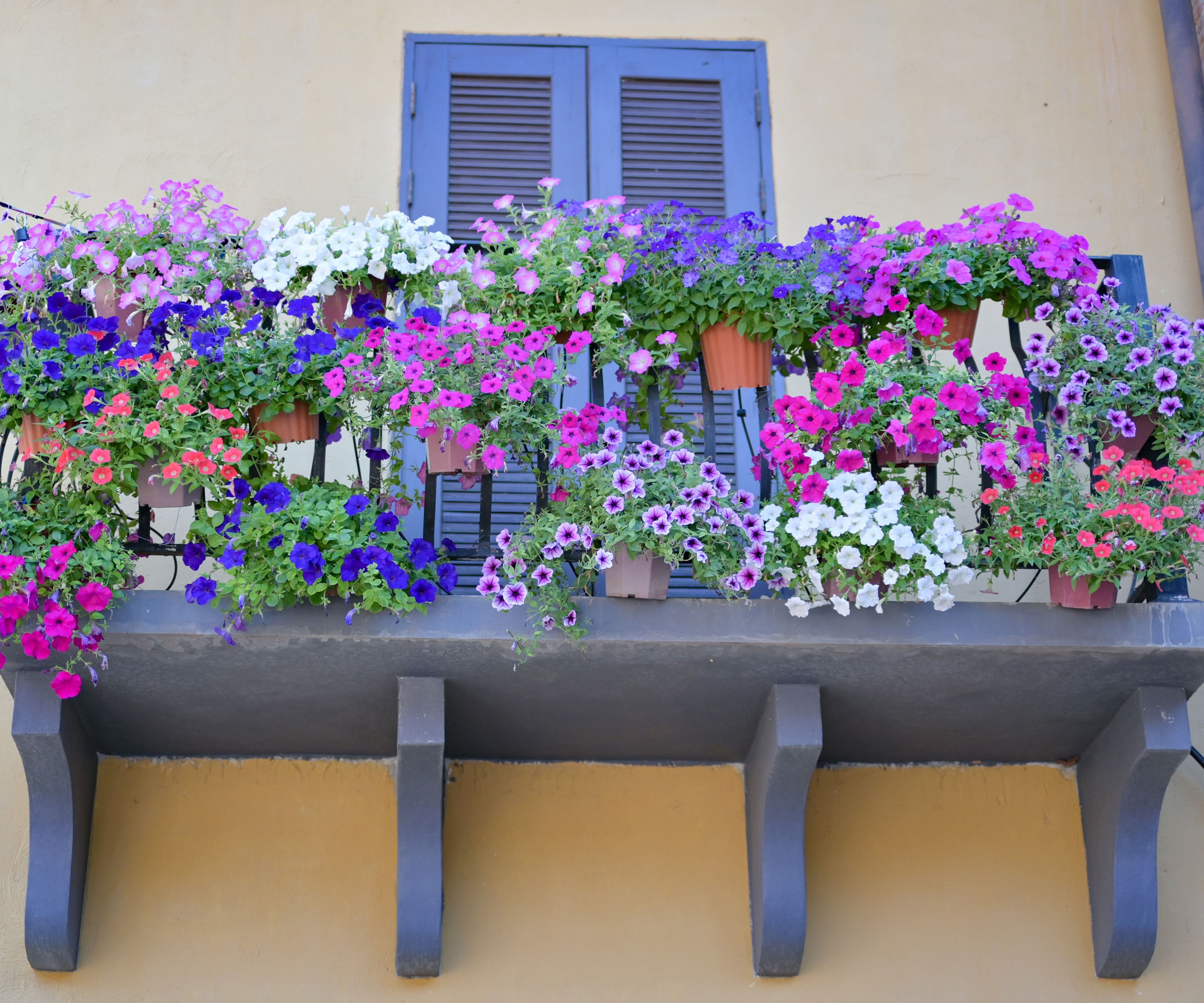
Petunia x hybrida ‘Supertunia Vista’ and ‘Wave’ petunias are popular garden, container, and hanging basket plants. And no wonder. Their large, wavy flowers, in a myriad of bright and pastel colors, are fragrant and easy to care for. The older types of petunias need deadheading or they go to seed, but series such as Supertunia Vista and Wave were bred to bloom continuously without the need for deadheading.
Grow them in full to part sun and moist, well-draining soil. When planting, add a slow-release 10-10-10 fertilizer, such as Scotts' All Purpose Flower and Vegetable Continuous Release Plant Food, available on Amazon, to keep them happy for months. In USDA zones 10 to 11, they are perennial; everywhere else, grow them as annuals.
Try Proven Winners' Supertunia Vista Bubblegum Petunia, available from Walmart, for a gorgeous pop of color that lasts until hard frosts hit.
4. Profusion Zinnias

‘Profusion’ is a series of compact, mounding, continuous-blooming zinnias in shades of pink, orange, white, red, yellow, and bicolor. Unlike their taller cousins, they are less prone to disease and are drought-tolerant when established. The flowers are self-cleaning, and they attract birds and butterflies. Plant in full sun and well-draining soil.
Profusion zinnia seeds, such as these Park Seed ones from Amazon, can be planted as late as August for end-of-season flowers before the frosts hit.
Unfussiest Perennials
These low maintenance, herbaceous perennials require little care and return year after year.
5. Butterfly Weed
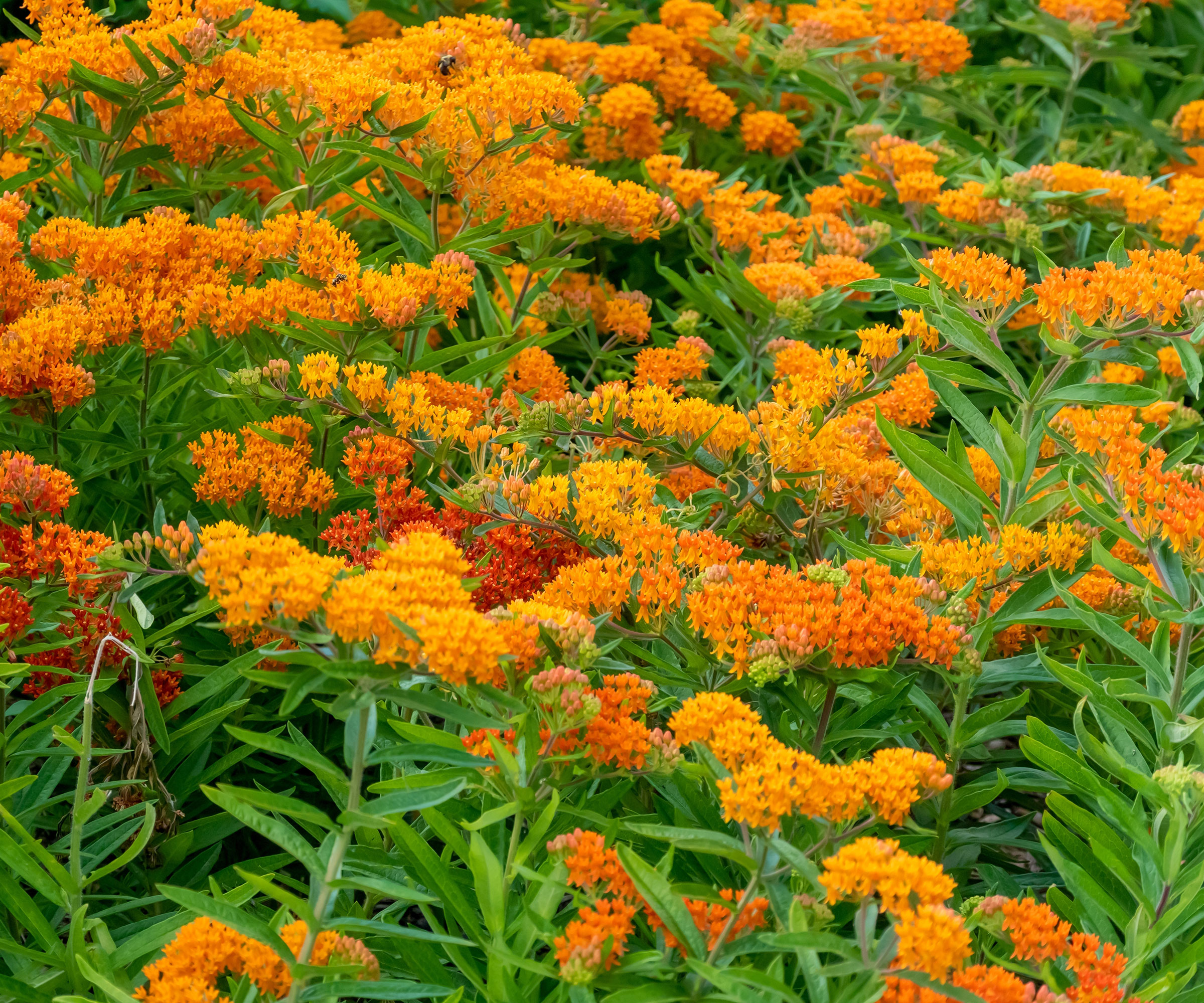
Butterfly weed (Asclepias tuberosa) is not bothered by heat or humidity and blooms on and off all summer with showy, bright orange clusters of flowers. It is drought-tolerant and does not need to be cut back or deadheaded. Blooms will continue. In winter, it dies back to the ground. In spring, it is slow to return, but once it starts, it grows quickly. It’s a milkweed host plant for the monarch butterfly and a nectar plant for bees, butterflies, and hummingbirds.
Plant butterfly weed in full sun in well-drained soils in USDA zones 3 to 9 in late fall or early spring – try these Survival Seeds' non-GMO butterfly weed seeds from Amazon.
6. Daylilies

Daylilies (Hemerocallis spp.) form a clump of grass-like leaves, and in early summer, send up scapes of trumpet-shaped flowers in many colors and bicolors, including red, orange, yellow, burgundy, cream, and pink. It is not a true lily, and flowers last only a day. The flowers will dry up and fall off by themselves, or you can pinch them off for a neater look. Remove the scapes when flowering finishes. Foliage may die back in winter, but some cultivars are evergreen or semi-evergreen. New growth will emerge in the spring.
Grow daylilies in full to part sun in well-draining soil in USDA zones 3 to 9. (Be sure to avoid the orange “ditch lily” or old-fashioned daylily that can be invasive.) The National Plant Network's Multicolor Daylily Masterpiece Collection from Lowe's contains eight glorious varieties for easy borders that shine.
7. Stonecrop
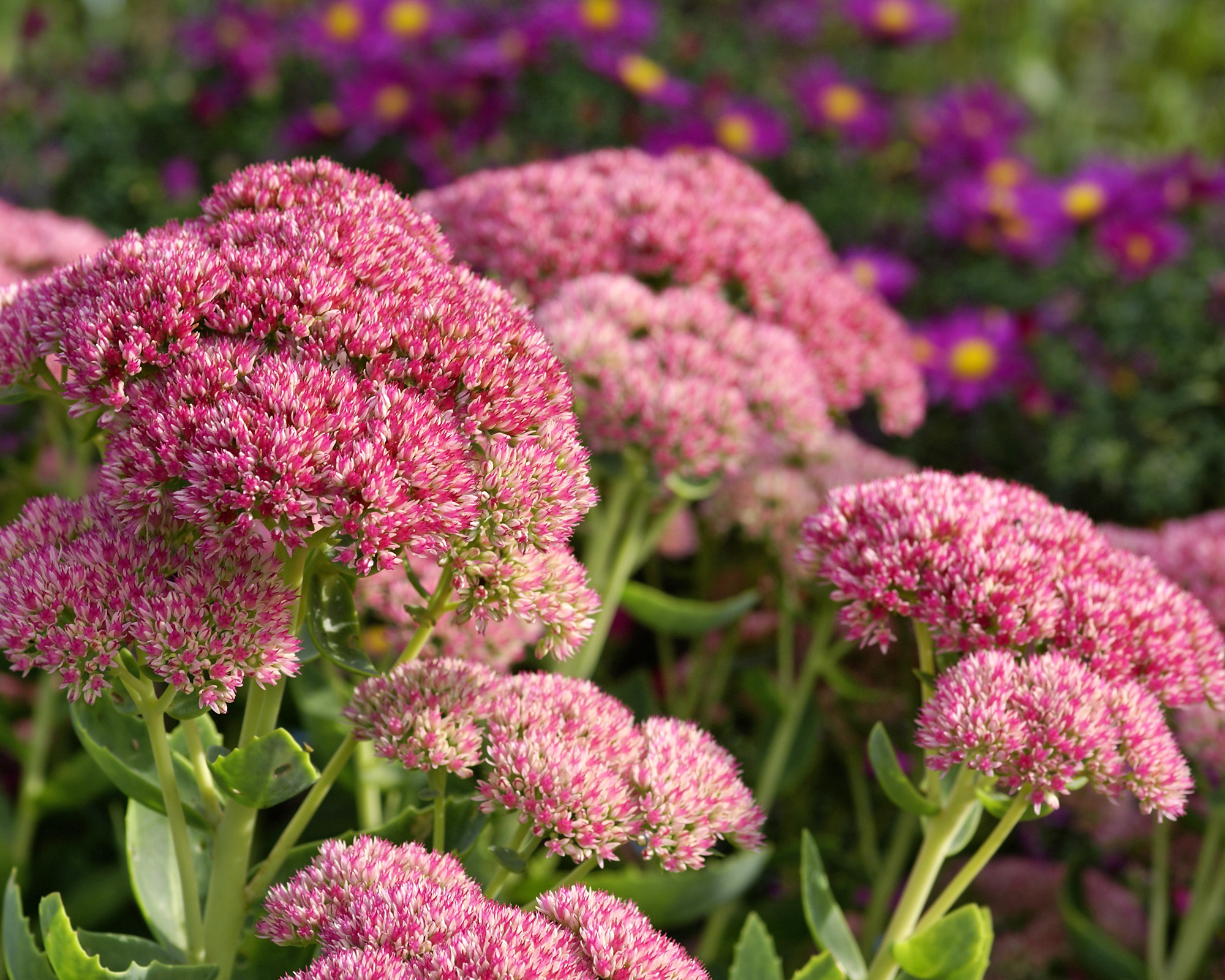
Stonecrop (Hylotelephium spectabile) is a showy, clumping, succulent perennial that blooms from late summer to fall. The tall stems are topped by a flat cluster of red or pink star-shaped flowers that attract butterflies and other pollinators. It needs little water because of its succulent stems and is drought-tolerant. After it blooms, leave the flower clusters for winter interest. It will die back in winter and regrow in spring. Plant in full to part sun in well-draining, poor soil in USDA zones 4 to 9.
'Autumn Joy' is one of the most popular stonecrop varieties, prized for its gorgeous red flowers. Order plants online from Clovers Garden via Amazon.
8. True Lilies
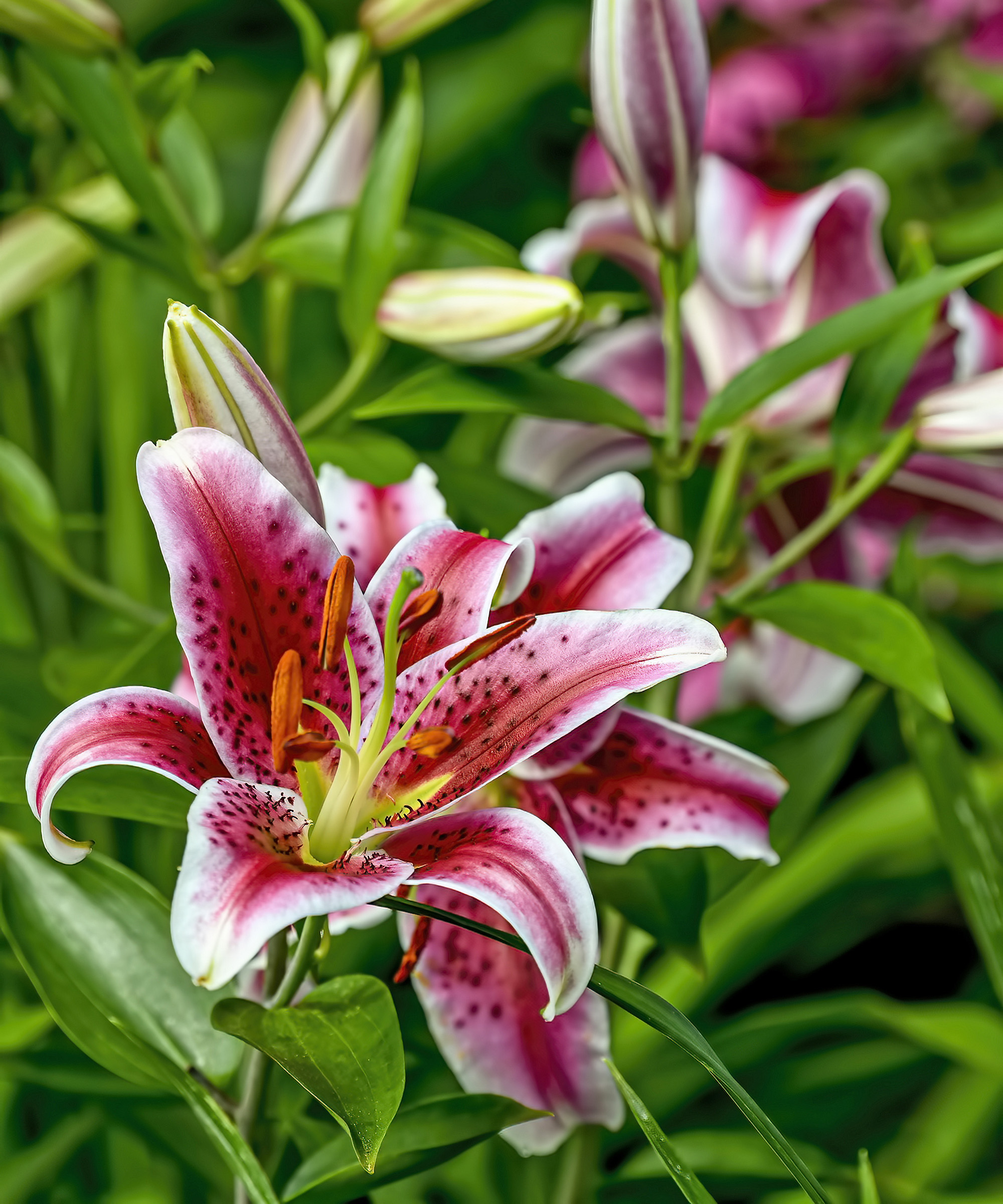
True lilies (Lilium spp.), such as Asiatic and Oriental lilies, are easy to plant and grow. You can purchase and plant them in the fall or spring for summer bloom. Their large, colorful, trumpet-shaped flowers are a standout in the garden. Oriental lilies emit an intoxicating fragrance; Asiatic lilies do not.
After they bloom, cut off the faded flowers to avoid seed formation (the bulbs will multiply, but if you want to try growing from seed, do not deadhead the bloom. Lilies grown from seed will not look the same as the parent, and it may take years to bloom.) Let the foliage die back naturally to regenerate the bulb. They will return the next summer, Asiatic first, then the Oriental lilies. Grow them in full sun in humusy, well-drained soil in USDA zones 4 to 9.
Not sure which you want to grow? Try Daylily Nursery's mixed Asiatic and Oriental Lilies bulb collection from Walmart. They're ideal for planting early in the fall.

After graduating from Oklahoma State University with a degree in English, Susan pursued a career in communications. In addition, she wrote garden articles for magazines and authored a newspaper gardening column for many years. She contributed South-Central regional gardening columns for four years to Lowes.com. While living in Oklahoma, she served as a master gardener for 17 years.